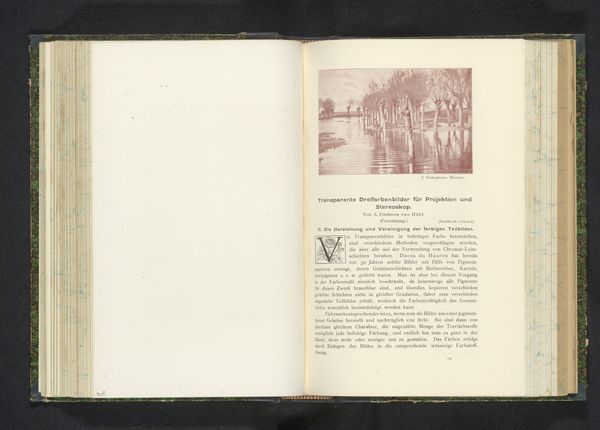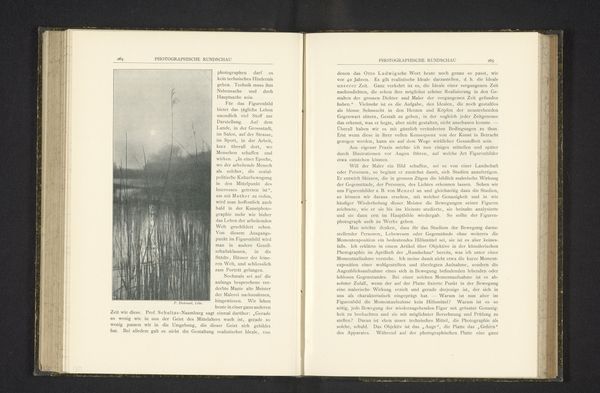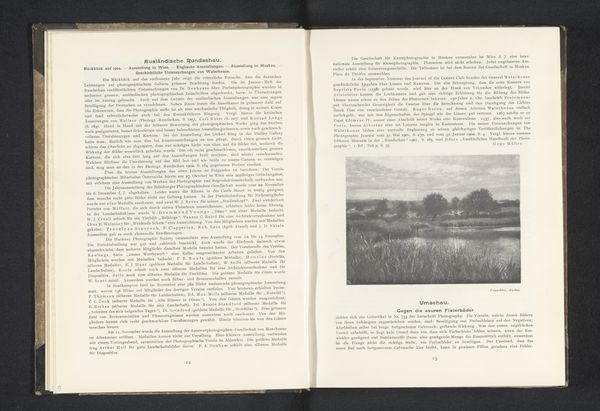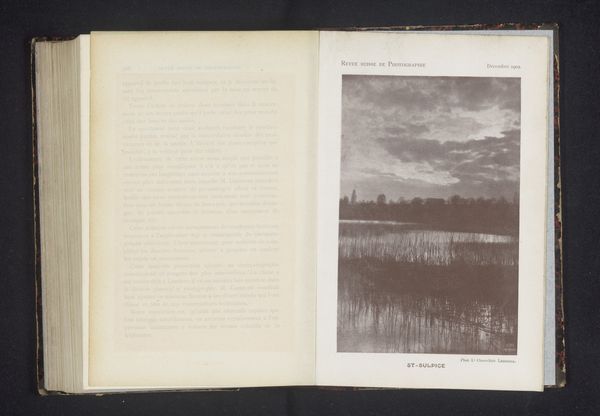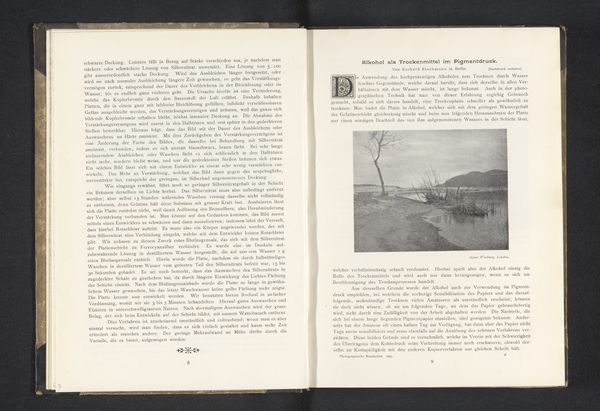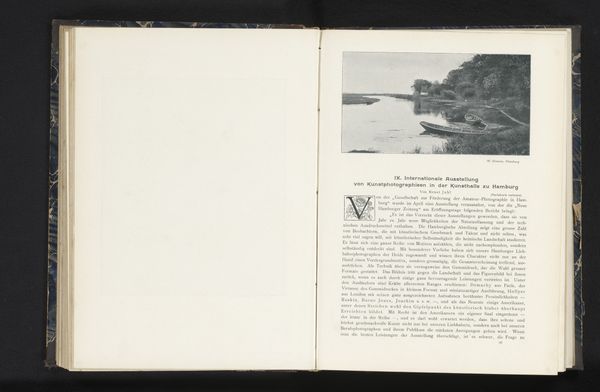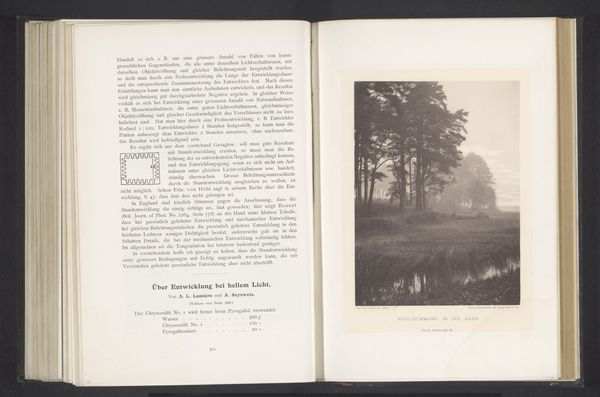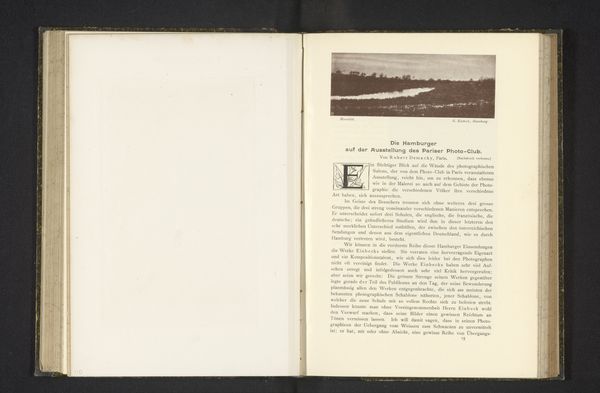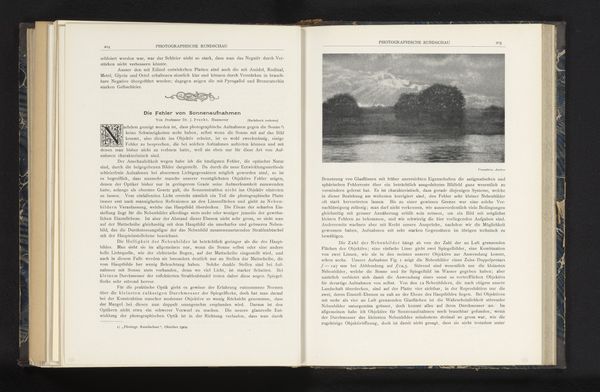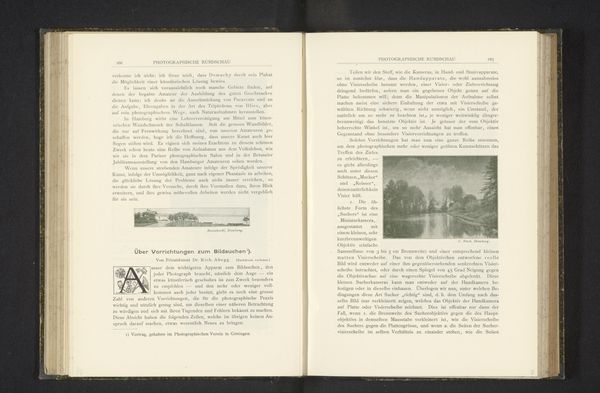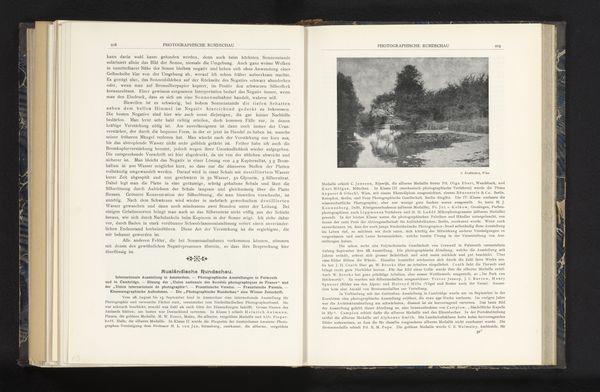
photogravure, print, photography
#
photogravure
# print
#
book
#
landscape
#
photography
Dimensions: height 84 mm, width 145 mm
Copyright: Rijks Museum: Open Domain
Curator: Let's take a look at "Waterpartij, met op de achtergrond bomen," a photogravure from before 1901, credited to Hauptmann A. Böhmer. Editor: My first thought is somber. The monochrome palette and stillness of the water create a quiet, almost melancholy mood. You can almost feel the damp air. Curator: It's fascinating how Böhmer utilizes the photogravure technique. The process, which involves etching a photographic image onto a printing plate, gained traction for its ability to reproduce continuous tones. How does this specific method impact the aesthetic and the potential reach of the image? Editor: The tactility is compelling; there’s something undeniably craft-oriented about it. You can practically sense the physical labor involved in preparing the plate, applying the ink, and pressing the print. This isn’t simply snapping a picture; it’s a consciously crafted object. Curator: Exactly, it challenges the perception of photography as purely a mechanical process, emphasizing the role of the artisan. But consider, also, the function within photographic circles at the turn of the century: establishing artistic legitimacy by emulating the aesthetic of painting. It legitimizes the *medium*. Editor: Perhaps. But to my eyes it goes deeper: I see this aesthetic decision tied to contemporary consumerism, mass production techniques used to democratize and circulate the image to larger publics, not just an effort to elevate photographic practice within the arts. The artist utilizes both material craft and accessibility to establish place and personhood. Curator: Interesting point, highlighting the intersection between artistry and market forces. It encourages one to reflect upon art patronage during that time. These photogravures, showcased within photographic journals and books, enjoyed significant distribution to a middle class intrigued by art. Editor: This all returns me to that sense of melancholy: is it only atmospheric or does it perhaps represent, for a modern viewer, an industrial anxiety associated with changing techniques and forms of circulation. It all runs so much deeper. Curator: Indeed. This photograph, or rather, this photogravure, invites us to consider the confluence of artistic ambition, technological innovation, and the shifting social landscape of the early 20th century. Editor: Agreed. And hopefully, to question the very boundaries we construct around artistic categories and hierarchies.
Comments
No comments
Be the first to comment and join the conversation on the ultimate creative platform.
